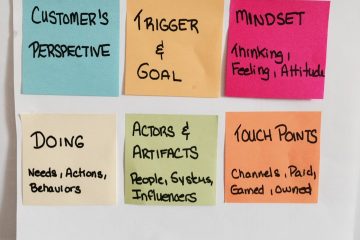B2B marketers are embracing chatbots–but not every bot makes a B2B website experience better. A good chatbot helps users accomplish something more efficiently and can make a site more enjoyable. A bad chatbot wastes time, frustrates users and drives them to the competition. Any task that doesn’t require human interaction can be automated by a chatbot, but don’t assume technology is all it takes. Building a conversational chatbot that offers more than chatter takes planning and effort. Crafting the right chatbot experience starts with understanding the needs of the users.
WHY—OR WHY NOT—BUILD A CHATBOT
The reason to build a chatbot is not to have a chatbot. Or because it is a trend, the competition has one, or just for fun. A chatbot must have a purpose or fulfill a need for users. Identify how a chatbot can help meet business goals or support a marcom strategy. To be useful, a chatbot needs to do more than follow limited direct commands and offer up amusing responses. Chatbots used in B2B applications need to understand user intent or risk negatively impacting a business and brand. If you can’t identify a task, service or process that a chatbot can perform to make something better, faster, or easier, then a chatbot is not the right solution.
When a chatbot is appropriate and well-implemented, it can:
- Increase brand affinity and reinforce a brand voice.
- Increase engagement and conversion rates.
- Streamline and improve lead generation and qualification.
- Provide faster and better-informed customer support, 24/7.
- Generate data about user language and sentiment.
- Gather direct feedback during sessions.
- Generate ideas for content or services to meet needs.
Ready to build a better bot? Follow these steps to get started.
HOW TO BUILD A BETTER B2B CHATBOT
1. Define the purpose and plan.
Start by outlining the chatbot’s purpose and benefits. Answer these questions to articulate the rationale behind the investment and define the plan.
- Who is the target user/audience?
- What need will the chatbot fulfill or useful service can it provide?
- How will the chatbot provide value? What will it make faster, better, or easier?
- How does the chatbot support our business or marketing objectives?
- How does this customer service model represent our company and brand?
It’s better to start simple and do one thing well rather than adding features that fall short of users’ expectations. Build only what is needed and don’t over-architect it. See what is and isn’t working before adding complexity that might diminish what could have been a simple, satisfactory solution.
2. Understand the options.
There are chatbots that use artificial intelligence (AI) and those that don’t. A simple chatbot may use rules or a decision-tree to chat. Its paths are limited, so users select from defined options and get programmed responses. An AI chatbot can use machine learning or natural language processing. Machine learning uses algorithms to test data and responses against an outcome–data is gathered and applied or “learned.” An intelligent chatbot can handle different scenarios and adapt. Users ask a question, the chatbot deciphers it and responds using its intelligence while turning the user’s input into more data.
Identify what level of chatbot is needed to support the conversational flow.
3. Establish success metrics.
What does a successful chatbot implementation look like? Based on the bot’s purpose, define measurable results. For a B2B website implementation, measurable goals might be:
- Streamline inquiries and improve response time by X.
- Reduce customer service calls by Y.
- Increase traffic to and leads from Z page.
- Improve user efficiency time by X to find a certain product.
When evaluating performance, look at analytics along with analysis of conversation flows and barriers. During chat sessions, you can also gather feedback from users about the accuracy of responses. For example, asking “Is this what you were looking for?” or “Was I helpful?” And be prepared with a reply if the input isn’t positive.
4. Craft a chatbot personality that is appropriate for the brand.
Poncho the weather bot , a fun, quirky weather forecast delivered by a cat in a raincoat, is not the right approach for a B2B industry thought-leader. The chatbot should have a voice and personality that is appropriate for the brand, service and user base. An avatar isn’t required, but creating one can help convey personality and make script-writing more consistent. Use these tips when engineering the conversation:
- Start with a greeting and introduction and end with a conclusion.
- Acknowledge questions and repeat things back to confirm and reduce errors.
- Be nice. A snarky response may seem amusing in a script but won’t be well-received when a frustrated user is looking for help.
- Make it fast and easy. Respect people’s time and get them on their way as quickly as possible. But…
- Give people time to respond. Reading, texting and processing speeds vary by user, so don’t be too fast.
5. Integrate the chatbot into the user experience—don’t interrupt it.
Plan when it is appropriate for the chatbot to offer assistance and how. Don’t aggressively confront users the moment he/she lands on a home page. Engagements should be tailored to the user’s actions. The chatbot’s greeting and conversation flow will be different for a user returning to complete a transaction and a first-time visitor. Write scripts for different scenarios to outline when the chatbot can be an asset to a user’s experience and not an interruption.
And, lastly, to successfully introduce users to the chatbot, be upfront about what it can and can’t do. Explain its limitations from the beginning of the interaction. Then teach people how to use it and provide specific examples. Managing expectations from the beginning will prevent users from being disappointed in the end.
For more tips on creating a valuable chatbot, read the long-form version of the original article, Chatbox UX: Crafting a Valuable Conversation.


